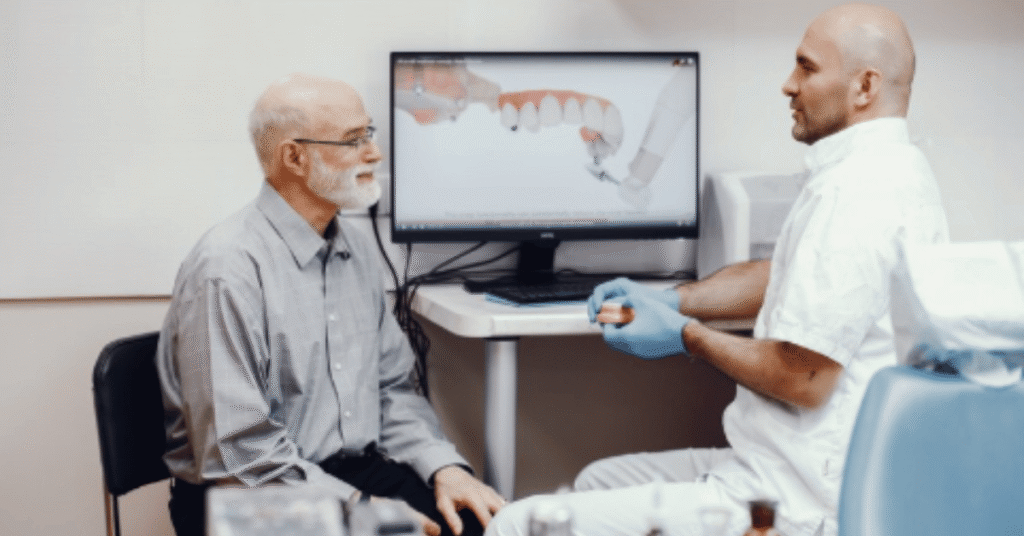Root canal recovery time is a topic often surrounded by uncertainty and anxiety, especially for first-time dental patients. Most individuals search for a simple answer to a complex question: How long does it take to fully recover from a root canal procedure? While some may feel better within days, others might take a few weeks. Recovery is influenced by various factors including the tooth’s condition, infection severity, personal health, and how well aftercare instructions are followed. This article provides a comprehensive, reader-friendly guide to root canal recovery—from expected timelines and common symptoms to tips for managing pain and preventing complications.
Understanding the Root Canal Procedure
Before diving into the recovery phase, it’s crucial to understand what a root canal involves. A root canal is a dental procedure used to save a tooth that is severely decayed or infected. It involves removing the infected pulp (nerve tissue and blood vessels), disinfecting the inside of the tooth, and sealing it with a filling or crown.
Root canals are typically done under local anesthesia and are relatively painless during the procedure. However, post-treatment discomfort can vary depending on the complexity of the case.
General Recovery Timeline
The timeline for root canal recovery is not the same for everyone, but a typical pattern exists:
| Phase | Timeframe | What to Expect |
|---|---|---|
| Immediate (0-48 hours) | Day of procedure to 2nd day | Mild to moderate discomfort, swelling, and sensitivity |
| Early recovery | Days 3–7 | Diminishing pain, better chewing ability, and improved overall comfort |
| Intermediate phase | Week 2 | Minimal symptoms, tooth may feel “different” but not painful |
| Full recovery | 3–4 weeks | Full healing, crown placement (if not already done), no pain during eating or brushing |
Key Factors That Influence Recovery Time
Recovery can differ widely due to several influencing factors. Understanding these can help set realistic expectations and avoid unnecessary stress.
1. Severity of Infection
If the tooth had a severe or chronic infection, the surrounding tissue may take longer to heal. Deep infections can extend inflammation beyond the tooth itself, making full recovery slower.
2. Number of Canals Treated
Molars usually have more canals than front teeth. A molar with four canals will naturally involve a more complex procedure than a single-canal front tooth.
3. Immune System Response
Patients with strong immune systems generally heal faster. Those with autoimmune disorders, diabetes, or who are undergoing treatments like chemotherapy may experience slower healing.
4. Post-Treatment Habits
Following your dentist’s post-op care instructions—taking prescribed medication, avoiding hard foods, and maintaining oral hygiene—can drastically reduce recovery time.
Immediate Post-Procedure Symptoms
Experiencing mild discomfort after a root canal is normal. Here are the most commonly reported symptoms during the first few days:
- Soreness: Around the treated tooth and jaw due to instrument manipulation.
- Sensitivity: Especially to pressure or temperature changes.
- Swelling: Mild gum swelling near the affected tooth.
- Discomfort when biting: As inflammation subsides, this typically goes away.
These symptoms should gradually diminish within 7–10 days.
Pain: How Long Does It Last?
Pain after a root canal should not last more than a few days. If pain persists beyond 10 days, consult your dentist. The table below shows typical pain timelines and possible causes if pain continues.
| Duration of Pain | Possible Cause |
|---|---|
| 1–3 days | Normal post-op inflammation |
| 4–7 days | Mild complications, tissue healing |
| Beyond 10 days | Possible reinfection or undetected canal issue |
| Sudden sharp pain after 2 weeks | Cracked tooth or improper filling |
Managing Pain During Recovery
Effective pain management can make your recovery smoother and faster. Dentists often recommend:
- Over-the-counter medications like ibuprofen or acetaminophen
- Cold compresses for swelling within the first 24 hours
- Avoiding hard or chewy foods to prevent pressure on the treated tooth
- Elevating the head while sleeping to reduce swelling
Foods to Eat and Avoid
Choosing the right foods after a root canal can significantly ease discomfort and support healing.
| Recommended Foods | Foods to Avoid |
|---|---|
| Soft fruits (bananas, mangoes) | Nuts and seeds |
| Mashed potatoes | Chewy candies |
| Yogurt and smoothies | Crunchy vegetables |
| Scrambled eggs | Hard bread or crusts |
| Soup and broth | Spicy foods |
Stick to a soft-food diet for at least 48 hours post-procedure.
When to Call Your Dentist
While minor symptoms are expected, some signs warrant immediate attention:
- Persistent or increasing pain after one week
- Swelling that doesn’t improve or worsens
- Fever or signs of infection (e.g., pus or foul odor)
- Allergic reactions to medications
Do not delay seeking care—early intervention can prevent complications.
Follow-Up Visits and Permanent Restoration
A temporary filling or crown is often placed immediately after the root canal. A permanent crown may be installed after 1–2 weeks. This is critical for:
- Protecting the tooth from future fractures
- Restoring full chewing function
- Preventing bacterial reinfection
Make sure to attend your follow-up appointments for crown placement or assessment – root canal recovery time.
Complications That Can Prolong Recovery
While root canals have a high success rate, complications are possible:
1. Re-Infection
This can occur if canals were not fully cleaned, or if bacteria enter through a cracked crown. Symptoms include recurring pain or swelling.
2. Missed Canals
Some teeth have hidden or curved canals that may be overlooked in the initial procedure. Retreatment may be necessary.
3. Post-Treatment Cracks
If a temporary filling is left too long or a crown is delayed, the tooth may fracture, requiring more complex care or extraction.
Psychological Recovery
Some patients experience dental anxiety even after the procedure is complete. If you felt emotionally stressed during the root canal, it may linger as dental avoidance. Strategies include:
- Talking to your dentist about future preventive care
- Practicing breathing techniques before appointments
- Seeking therapy if fear of dental procedures is intense
Tips for Faster Healing
To accelerate your recovery, consider the following:
- Hydrate well: Water helps reduce inflammation and supports tissue healing.
- Limit physical activity in the first 24 hours to avoid blood pressure spikes.
- Avoid smoking or alcohol during the healing period as these can delay tissue repair.
- Maintain oral hygiene gently around the treated area—use a soft-bristle brush and avoid vigorous rinsing.
Long-Term Care After a Root Canal
Your root canal may be complete, but long-term care ensures the tooth remains healthy for years. Best practices include:
- Routine dental checkups every 6 months
- Daily flossing and brushing
- Avoiding biting hard objects, such as pens or ice
- Wearing a nightguard if you grind your teeth
With proper care, a root canal-treated tooth can last a lifetime – root canal recovery time.
Pediatric Root Canals: Is Recovery Different?
Children who undergo pulpotomy or pulpectomy (child equivalents of root canals) generally heal faster due to better tissue regeneration. However, ensuring they follow care instructions (with help from parents) is essential.
Myths vs. Facts About Root Canal Recovery
There are many misconceptions around root canals and their aftermath. Let’s debunk a few:
| Myth | Fact |
|---|---|
| Root canals are painful | Modern techniques make them virtually pain-free |
| Healing takes months | Most people recover in 1–2 weeks |
| The tooth becomes useless | A treated tooth functions normally after a crown is placed |
| You don’t need a crown afterward | A crown is critical to prevent future damage |
Alternatives If Root Canal Fails
If a root canal fails and the infection returns, your options include:
- Retreatment: Cleaning and refilling the canals again
- Apicoectomy: Surgical removal of the tooth root tip
- Extraction: Removing the tooth entirely and replacing it with an implant or bridge
Each option has its own recovery timeline and cost.
Conclusion: Patience Is Key to Full Recovery
Recovering from a root canal is not a race—it’s a process that demands patience and proper care. While most people feel better within a few days, full internal healing may take weeks. By understanding the timeline, managing discomfort, and adhering to aftercare, you can ensure a smooth recovery and protect your tooth’s long-term health.
Every root canal story is slightly different, but one truth is universal: when done properly and followed by good care, root canals relieve pain, not cause it – root canal recovery time.
FAQs
1. How long does pain last after a root canal?
Mild pain or discomfort may last 1–3 days. Persistent pain beyond 10 days should be evaluated.
2. Can I go to work after a root canal?
Yes, many return to work the same day. Mild discomfort is manageable with over-the-counter pain relief.
3. Is it normal to feel pressure on the tooth post-procedure?
Yes, slight pressure sensitivity is common and usually subsides within a week.
4. What if my tooth hurts weeks after a root canal?
This could indicate infection or a missed canal. Contact your dentist for assessment and treatment.
5. Can I eat normally after a root canal?
Soft foods are recommended for the first 48 hours. Avoid hard or chewy foods until a crown is placed.







